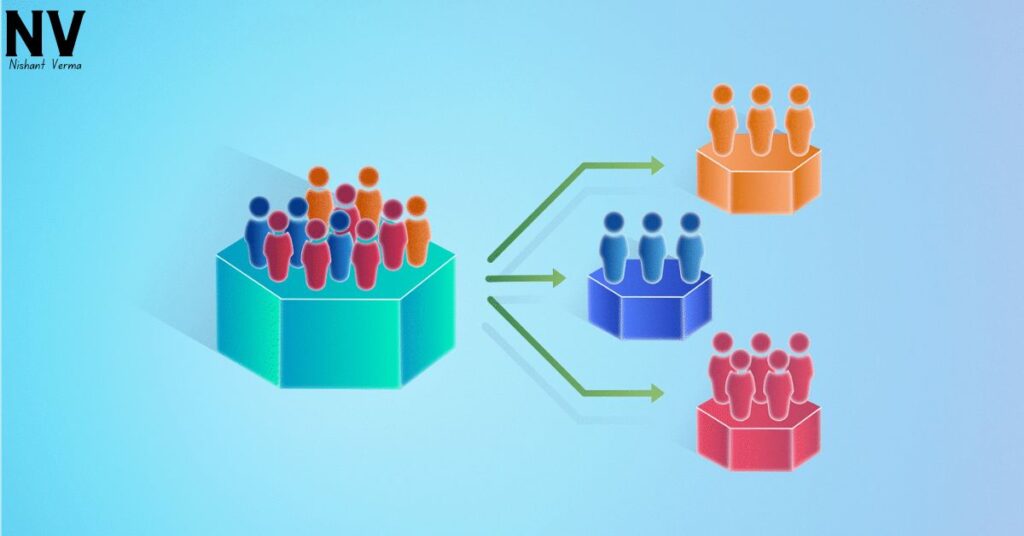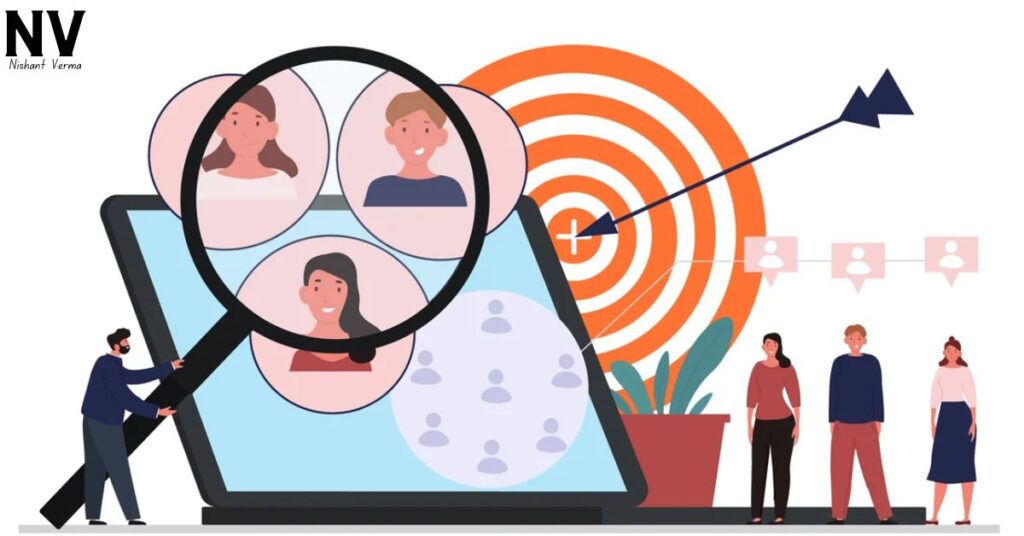In the vast landscape of marketing, understanding your customers is like having a treasure map to success. One powerful tool in this journey is customer segmentation – a strategic approach that allows businesses to divide their diverse customer base into distinct groups. By tailoring marketing efforts to these groups, businesses can create targeted and personalized campaigns that resonate with their audience. In this article, we’ll explore the Power of customer segmentation, unraveling its importance, methods, and how businesses can leverage it for effective targeted marketing in a language that’s easy to grasp.

Understanding Customer Segmentation
What is Customer Segmentation?
Power of customer segmentation is like sorting a box of assorted chocolates into categories based on flavors. In the business world, it’s the process of dividing customers into groups with similar characteristics, behaviors, or preferences. These groups, or segments, help businesses understand their customers better and tailor their marketing strategies accordingly.
Why is Customer Segmentation Important?
Imagine trying to sell winter jackets to people living in tropical climates – not the best strategy, right? Power of customer segmentation allows businesses to avoid such missteps by ensuring that their marketing efforts are relevant and resonate with specific groups. It’s about delivering the right message to the right people.
Types of Customer Segmentation
Demographic Segmentation:
- Age: Dividing customers based on age groups.
- Gender: Segmenting based on gender.
- Income: Categorizing customers by income levels.
- Education: Grouping based on educational qualifications.
Geographic Segmentation:
- Location: Segmenting customers by region, country, or city.
- Climate: Considering climate variations for product relevance.
Psychographic Segmentation:
- Lifestyle: Categorizing based on interests and activities.
- Personality: Segmenting by personality traits and values.
Behavioral Segmentation:
- Purchase History: Grouping based on past buying behavior.
- Usage Patterns: Segmenting by frequency or intensity of product use.
- Brand Loyalty: Categorizing by loyalty levels.

The Benefits of Customer Segmentation
- Personalized Marketing: Power of customer segmentation enables businesses to tailor their personalized marketing messages to the specific needs and preferences of each group. This personalization enhances the likelihood of customers engaging with the content.
- Improved Customer Retention: By understanding the unique characteristics of each segment, businesses can create loyalty programs and incentives that resonate with different customer retention groups, fostering long-term relationships.
- Optimized Resource Allocation: Rather than adopting a one-size-fits-all marketing approach, businesses can allocate their resources more efficiently by focusing on the segments that are most likely to respond positively to their campaigns.
- Enhanced Product Development: Knowing the preferences of different customer segments helps businesses develop products or services that meet specific needs, ensuring higher satisfaction and success in the market.
How to Implement Power of customer segmentation
- Collect Relevant Data: Begin by gathering information about your customers. This may include demographic details, purchase history, website interactions, and feedback. The more comprehensive your data, the better you can define meaningful segments.
- Define Segmentation Criteria: Choose criteria that align with your business goals and customer base. Whether it’s age, location, buying behavior, or a combination of factors, the criteria should be relevant to your objectives.
- Create Customer Personas: Develop detailed profiles or customer personas for each segment. These personas represent the typical characteristics, behaviors, and preferences of customers within a specific group.
- Utilize Technology: Leverage customer relationship management (CRM) tools and analytics platforms to process and analyze the collected data. These tools can help identify patterns and trends within your customer base.
- Test and Refine: Implement your segmentation strategy gradually and monitor its effectiveness. Through A/B testing and customer feedback, refine your segments and marketing approaches to optimize results.
Real-World Examples of Customer Segmentation
- Spotify: Spotify, the music streaming giant, uses Power of customer segmentation based on music preferences. By analyzing users’ listening habits, they create personalized playlists and recommendations, enhancing user engagement.
- Amazon: Amazon segments its customers based on their purchase history and browsing behavior. This allows them to recommend products similar to past purchases and personalize the user experience.
- Starbucks: Starbucks employs geographic and behavioral segmentation. They adapt their menu based on regional preferences and offer personalized promotions through their loyalty program, rewarding customer loyalty.

Challenges and Solutions in Customer Segmentation
Data Privacy Concerns:
Challenge: Gathering customers may raise data privacy concerns.
Solution: Clearly communicate your data usage policies and ensure compliance with data protection regulations. Offer opt-in options for personalized experiences.
Segment Overlap:
Challenge: Customers may exhibit characteristics of multiple segments.
Solution: Refine your segmentation criteria to minimize overlap or create a dynamic segmentation model that allows customers to move between segments based on their behavior.
Limited Resources:
Challenge: Small businesses may lack the resources for comprehensive segmentation.
Solution: Start with basic demographic segmentation and gradually refine your approach as your business grows. Focus on the most impactful criteria.
Tips for Successful Targeted Marketing through Customer Segmentation
- Craft Tailored Messages: Use the insights from Power of customer segmentation to create messages that resonate with each segment. Speak directly to their needs, preferences, and pain points.
- Choose the Right Channels: Understand where your target segments spend their time and allocate your marketing resources accordingly. Whether it’s social media, email, or other channels, be present where your customers are.
- Dynamic Personalization: Embrace dynamic personalization on your website and in marketing communications. Display content, product recommendations, and offers that align with the specific characteristics of each segment.
- Iterate Based on Feedback: Actively seek feedback from your customers. Understand how they respond to your segmented marketing efforts and be willing to adjust your approach based on their input.
- Monitor and Analyze: Continuously monitor the performance of your marketing campaigns for each segment. Use analytics tools to assess engagement, conversion rates, and other relevant metrics to refine your strategy.
Conclusion
Power of customer segmentation is the compass that guides businesses through the vast ocean of marketing possibilities. By understanding the unique needs and characteristics of different customer groups, businesses can tailor their strategies for maximum impact. From personalized messaging to optimized resource allocation, the benefits of Power of customer segmentation are far-reaching. Whether you’re a small startup or an established enterprise, embracing customer segmentation can unlock the door to a more efficient, targeted, and successful marketing journey. So, dive in, explore your customer landscape, and let the power of segmentation propel your business toward new heights.




